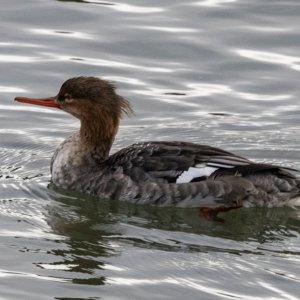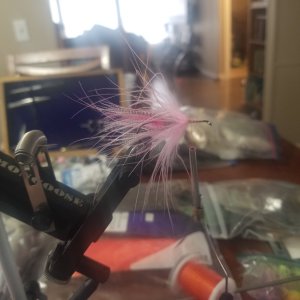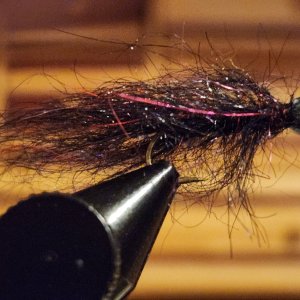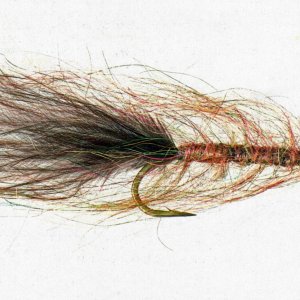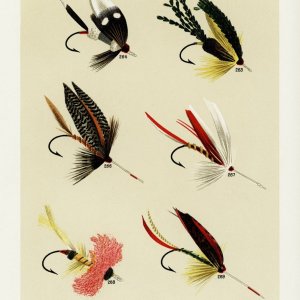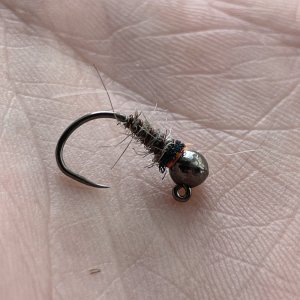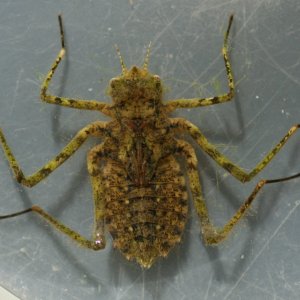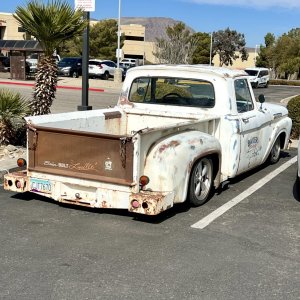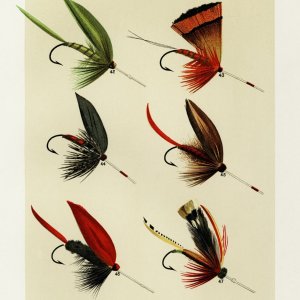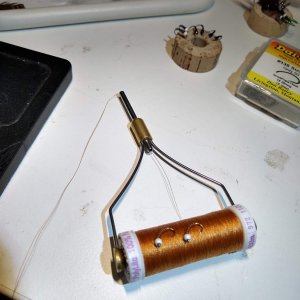Nor did I mean to imply that you did, but since you were offering a break and I was thinking back to another thread where I was talking about gear and my love of small streams and somebody got offended, I figured I’d take the opportunity to make my intent clear. I get that I’m writing a lot. I’m not trying to bowl anyone over or anything.It was mostly a satirical interjection, not inferring any of that
You are using an out of date browser. It may not display this or other websites correctly.
You should upgrade or use an alternative browser.
You should upgrade or use an alternative browser.
salmon restoration
- Thread starter albula
- Start date
I think it’s more like Divad wrote where even though a lot has been spent on salmon restoration it is a teensy fraction of overall budgets and it’s just enough to keep the squeaky minority that cares appeased enough that the status quo remains, more or less.Vastly more common ground than disagreement.
My biggest fear is salmon recovery being seen as an endless money pit with no results by those who control the budgets. Thus far we have little to argue our case.
@Smalma if there were a way to measure it would number of smolts be even better for escapement and recovery goals?Escapement and recovery goals need to be redefined to eggs in the gravel. A large driver in the declining fecundity is shrinking size (smaller fish equal fewer eggs) and in the case of Chinook younger ages.
We can monitor the tar out of streams and projects. We have the tools. You can monitor spawning returns with redd and carcass surveys, weirs and sonar. You can cap redds and monitor smolt production. You can set up smolt traps and run 100 confidence tests. You can seine the estuary. You can PIT tag. You can do all kinds of stuff with funding. Some of this is being done in some places.
A lot has been learned from the Intensively Monitored Watersheds. For example, did you know that there are coho juveniles outmigrating in Fall In places? Turns out, there are. We didn’t know because we didn’t look. I think we don’t know much, sometimes not even the right questions to ask.
 www.pnamp.org
www.pnamp.org
A lot has been learned from the Intensively Monitored Watersheds. For example, did you know that there are coho juveniles outmigrating in Fall In places? Turns out, there are. We didn’t know because we didn’t look. I think we don’t know much, sometimes not even the right questions to ask.
Pacific Northwest Aquatic Monitoring Partnership
I have been involved in habitat re-opening projects in the past (in Britain). The obstructions that were removed were total barriers to salmon, as defined by the observation of salmon fry and parr via electro fishing below the obstructions, but not above. The measure of success was finding salmon juveniles above the previous obstruction site by electro fishing after one or two seasons, showing that the newly re-opened habitat was being used. By this measure, every single project was a success.
An important note is that in at least one case, salmon regularly spawned right below the culvert in an easy to see spot before the project. Afterwards they spawned upstream, in better habitat. If you just go by seeing spawning adults, you’d get the wrong idea about the success of the project.
An important note is that in at least one case, salmon regularly spawned right below the culvert in an easy to see spot before the project. Afterwards they spawned upstream, in better habitat. If you just go by seeing spawning adults, you’d get the wrong idea about the success of the project.
You are on the mark in bringing up this subject Rob. When the ESA listings on the Columbia River began in the 90s, the US Congress was very much into wanting to provide funding to "fix" this issue, because in Congress the way you address anything is by providing funding. Unfortunately Congress (and state legislatures) have very short and childlike memories. After about 10 years or so, Congress developed "salmon fatigue." The people who provide the money do want results, and they want the results pretty damn quick. Given the complexities of the Columbia River basin, a billion dollars and continuing decline of salmon populations doesn't look like "recovery" to Congress, or to most people viewing the situation objectively.Vastly more common ground than disagreement.
My biggest fear is salmon recovery being seen as an endless money pit with no results by those who control the budgets. Thus far we have little to argue our case.
Quite frankly in terms of coho, Chinook and sockeye I think our salmon recovery money would be best spent buying up commercial fishing rights.
By any measure of economic modeling, fish habitat restoration likely rates as the worst possible monetary investment. The marginal rate of economic return is just about nonexistent. There are possibly a few exceptions. Consequently arguments for fish habitat restoration are always on the defensive, that the fish are "priceless," meaning you can't put a value on them. Except in the case of salmon as a commercial commodity, it certainly is possible to place a value on them. Since a persuasive economic argument for habitat restoration is lacking, we often fall back on a legal one. The culvert case is essentially a tort claim. Property was taken, mitigation must be provided, and out-of-kind mitigation is unacceptable to the plaintiffs. The replacements in the culvert case are now estimated to cost around 4 billion dollars. I admit to not having run the numbers, but I'll take a swing with a SWAG that the fishery benefits of replacing all the culverts won't reach one million dollars over the projected lives of all the replacement projects. Habitat restoration is that expensive and that unproductive. Yet we as a society prefer to continue degrade habitat and offer the mitigation of over-budget and under-performing mitigation instead of stopping the ongoing degradation. This suggests to me that Smalma isn't so much a grouchy old man as just being real in his assessment that society has no real intention of recovering salmon - and by extension, steelhead.
There are two reasons that I have read about. The first is ocean fishing, whereby Chinook that would naturally mature at ages 4, 5, and 6 are instead caught and harvested at ages 2, 3, and 4 such that Chinook have a greatly reduced chance of living to the ages of 4, 5, or 6. This makes for significantly smaller adult Chinook, and smaller adults carry significantly fewer eggs per female, making any given escapement less productive because it consists primarily of younger spawners. Another reason is that researchers have observed changes in forage cycles in the ocean causing Chinook to forage on less nutritious food, which leads to smaller size at maturity. Further, Chinook are less productive because as mainstem river spawners, their smaller size results in digging shallower redds in smaller substrate that is more susceptible to flood scour, and therefore higher egg and pre-emergent mortality. And of course the story wouldn't be complete without mentioning that the erosion due to degraded watersheds (logging and road building) results in severe sedimentation of spawning redds, even further reducing egg survival, just in case there is no flood in a given year. There are probably other contributing factors that I'm leaving out, but I think you get the idea.Why are our Chinook so small and unproductive?
Don't mean to answer for Smalma, but I have an opinion. I think it depends on what and why you want to measure. Like Rob says repeatedly, returning adults is what matters (to most people), and that's true. Ultimately we want to see an increase in the number of adult recruits (whether they are allowed to return to spawn or are harvested in fisheries). However, measuring juvenile or smolt production gives us important information about the productivity of habitat (existing, restored, or renewed access to) and freshwater carrying capacity. I see this as having importance in a situation where we may be increasing the productivity of certain units of freshwater habitat but cannot measure it in numbers of adult recruits due to ocean productivity (and or capacity) being on a declining trend. I think we need to use metrics that inform us about the contributing effect, or lack thereof, of our restoration efforts.@Smalma if there were a way to measure it would number of smolts be even better for escapement and recovery goals?
Several culvert projects near me. One in particular was in a very lightly traveled spot, with a near zero ability for fish to move past it. Now it is completed, and the small creek is easily passed. Looks to be the type of stream for Coho spawning and SRC spawning.
I fished the mouth of the creek where it dumps into the canal, and know sea run cutts are around there.
Don't know how it will pan out, but looking at the work done and the type of watershed, always struck me as a good candidate for this sort of work.
YMMV
I fished the mouth of the creek where it dumps into the canal, and know sea run cutts are around there.
Don't know how it will pan out, but looking at the work done and the type of watershed, always struck me as a good candidate for this sort of work.
YMMV
There are two reasons that I have read about. The first is ocean fishing, whereby Chinook that would naturally mature at ages 4, 5, and 6 are instead caught and harvested at ages 2, 3, and 4 such that Chinook have a greatly reduced chance of living to the ages of 4, 5, or 6. This makes for significantly smaller adult Chinook, and smaller adults carry significantly fewer eggs per female, making any given escapement less productive because it consists primarily of younger spawners. Another reason is that researchers have observed changes in forage cycles in the ocean causing Chinook to forage on less nutritious food, which leads to smaller size at maturity. Further, Chinook are less productive because as mainstem river spawners, their smaller size results in digging shallower redds in smaller substrate that is more susceptible to flood scour, and therefore higher egg and pre-emergent mortality. And of course the story wouldn't be complete without mentioning that the erosion due to degraded watersheds (logging and road building) results in severe sedimentation of spawning redds, even further reducing egg survival, just in case there is no flood in a given year. There are probably other contributing factors that I'm leaving out, but I think you get the idea.
On the lucky few that do return at 5 or 6 years old, is there data on how much those fish have decreased in size? Ive been curious about that. I know few are allowed to get to that age, but thats a seperate issue....an issue that seems so widely known now that its maddening nothing is done about it.
HauntedByWaters
Life of the Party
Wanted to share, juvenile use of these newly reconnected habitats is a big deal in my experience. I have done some projects and doing following planting and monitoring after a high water and saw juvenile salmon in pools immediately above where barriers had been removed. This was usually on culverts of very small streams that went under a road I then dumped straight into a larger flow. Those little trickles get big and become some of the cleaner safer water in high water conditions. The fish climb out of the nasty stuff if they can. We are gaining spawning habitat and refuge with these projects.
If there is data for this, I don't know about it. I think managers simply accept the situation as is and deal with it. Trying to do something about it is a risky career move.On the lucky few that do return at 5 or 6 years old, is there data on how much those fish have decreased in size? Ive been curious about that. I know few are allowed to get to that age, but thats a seperate issue....an issue that seems so widely known now that its maddening nothing is done about it.
Salmon recovery is a multi million dollar industry , results may vary.Here is an interesting but perhaps not surprising take on a recent habitat restoration project attempted near me. I can neither deny nor confirm the veracity of the anecdotal information but personally found it to be credible.
I'm not sure I would go so far as to say it did the opposite. A shorter version of the story I typed up Sunday and I guess, accidentally deleted, is this: the Indian Creek bridge project WAS because of salmon restoration. The frustrating part, is that there was absolutely nothing structurally wrong with the bridge. My wife and I were there when they were jackhammering it out, and the DOT engineer was amazed at how stout it was built in 1920, and said there were no fractures...it was in excellent condition. What the fish biologists deemed a "partial obstruction", was actually a concrete drop off that formed a small waterfall (about 2 ft tall), about 40 ft downstream of the bridge, and was not connected at all to the bridge/tunnel (It was not a culvert, it was a concrete bridge/tunnel). It could have easily been removed without touching the bridge. I am an aluminum boatbuilder, and in fact, offered to build an aluminum fish ladder free of charge and bring my crane to help install it. For 5 years straight, after the Elwha dam removal, we had king and coho salmon spawning in our backyard, usually 8-15 or so fish. They said "just wait until the bridge comes out, you'll have hundreds!". Two seasons now, we've seen not a single king, and only one coho. The biologists are blaming the DOT engineers and contractor, but after pushing for this for years, I never saw any biologist there keeping an eye on things to make sure they got done right. We had much dealings with the DOT engineers and the contractors, both of whom treated us and our property with respect, and I believe tried hard to do the right things. The biologists say the gradient is too fast, not enough cover for the fish, etc. I don't think you'll ever see any articles about this part of the story, unless I tell it. The previous owner and ourselves, have allowed the biologist access to our property to take fish surveys for years. I do a lot of work with the tribes, I'm an avid fisherman, I'm intimately involved with that creek and the fisheries. That bridge did not need to be replaced; it seems to have made things worse for the returning salmon and was a monumental waste of OUR taxpayer dollars. There are many more details to the story, more than I can type at the moment...
skyrise
Steelhead
Then you have the so called restoration work on the lower Snohomish River which looks good driving by at 60 mph, just don’t look upriver at the apartments and hotels and developments for amazon & others. But boy the worthless politicians love to take credit for saving salmon. Just like they all love to say they are all for taking care of the out of control crime we have now.Showing ANY positive results is a minimum standard not an impossible one.
Expecting tax payers to keep paying the salmon recovery bill with no recovery taking place and no reason to believe things will change for more than 30 years is an impossible expectation. In fact it's an irresponsible expectation.
Conservation is not taking place.
It is. We're expanding our environmental program at the CC. I see many former students working in the field of habitat enhancement. I don't mind some tax dollars, and my donation cash, going in this direction.Salmon recovery is a multi million dollar industry , results may vary.
Give it time. Some places come back quick. Some take time to be "fishy". One of my favorite reaches was "improved" and has basically been baren for two years (tiny fish mostly). Another was back later in the season. Much of the better fishing at Wooten is where projects were done one or two decades ago. Years of degradation will take a while to restore to healthy habitat.
I rarely see a salmon that much of this work is being done for, but I can see the stream health for other critters improving.
I do think that WHITEFISH restoration should be a higher priority, but politicians seem to avoid kissing the ugly babies. I saw an article where Michigan is restoring grayling and I'm jealous.
HauntedByWaters
Life of the Party
It is. We're expanding our environmental program at the CC. I see many former students working in the field of habitat enhancement. I don't mind some tax dollars, and my donation cash, going in this direction.
Give it time. Some places come back quick. Some take time to be "fishy". One of my favorite reaches was "improved" and has basically been baren for two years (tiny fish mostly). Another was back later in the season. Much of the better fishing at Wooten is where projects were done one or two decades ago. Years of degradation will take a while to restore to healthy habitat.
I rarely see a salmon that much of this work is being done for, but I can see the stream health for other critters improving.
I do think that WHITEFISH restoration should be a higher priority, but politicians seem to avoid kissing the ugly babies. I saw an article where Michigan is restoring grayling and I'm jealous.
So many of my cohort from grad school have said to me after graduation that they never realized the degree to which the money is for the fish. People who studied bears, clams, elk, mountain goats, don’t get the funding. Some are now working for fish groups because that is where the jobs are. I was a fish nerd from conception so I was always on the track.
So true what is being said about the amount of dollars/jobs in the fish world. From a California perspective, that began to change during the negotiations for the Klamath Basin Restoration Agreement which began in 2005 (original agreement was signed in 2010). Millions of restoration dollars began to flow into the basin with 100's of projects designed primarily to benefit the ESA listed SONCC ESU coho. My CA DFW duties morphed to became more fish-centric as well.
I retired in 2016 but still receive the weekly video weir counts for some upper basin tribs. After millions of dollars spent, adult coho returns remain depressed and unchanged, wild springers are on the verge of blinking out, and fall chinook returns have been below the conservation floor for the past 3 years. With so many issues plaguing the Klamath (not to mention the ocean which we have ZERO control over), I never expected instant gratification from tributary restoration projects. The next big step will be dam removal.
I retired in 2016 but still receive the weekly video weir counts for some upper basin tribs. After millions of dollars spent, adult coho returns remain depressed and unchanged, wild springers are on the verge of blinking out, and fall chinook returns have been below the conservation floor for the past 3 years. With so many issues plaguing the Klamath (not to mention the ocean which we have ZERO control over), I never expected instant gratification from tributary restoration projects. The next big step will be dam removal.
Rob Allen
Life of the Party
So true what is being said about the amount of dollars/jobs in the fish world. From a California perspective, that began to change during the negotiations for the Klamath Basin Restoration Agreement which began in 2005 (original agreement was signed in 2010). Millions of restoration dollars began to flow into the basin with 100's of projects designed primarily to benefit the ESA listed SONCC ESU coho. My CA DFW duties morphed to became more fish-centric as well.
I retired in 2016 but still receive the weekly video weir counts for some upper basin tribs. After millions of dollars spent, adult coho returns remain depressed and unchanged, wild springers are on the verge of blinking out, and fall chinook returns have been below the conservation floor for the past 3 years. With so many issues plaguing the Klamath (not to mention the ocean which we have ZERO control over), I never expected instant gratification from tributary restoration projects. The next big step will be dam removal.
I think there are things within the ocean survival part of the equation that we could do that would have immediate and long term affects but there has to be the political will to do it.
I think there are things within the ocean survival part of the equation that we could do that would have immediate and long term affects but there has to be the political will to do it.
Like what?


